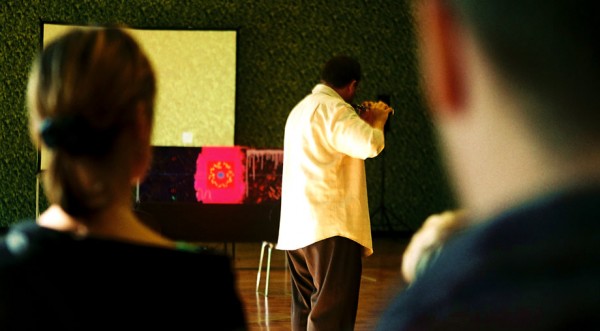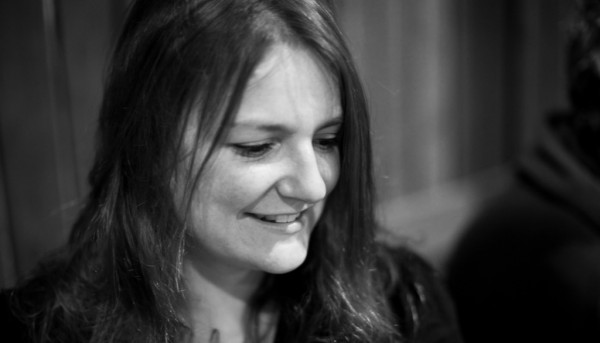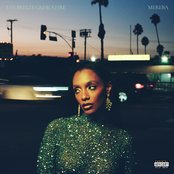With recent premieres by Dutch accordion duo TOEAC, Colinton Amateur Orchestral Society, Manchester Camerata and period instrument trio Spirituoso, 29-year-old composer Nina Whiteman has had a busy year, not mentioning performances as a vocalist with her flute, voice and cello group, Trio Atem, whose most recent performance was the premiere of graphic scores by artist Michael Mayhew at Manchester’s Whitworth Art Gallery and who make their London debut in April at Kings Place.
You can currently see and hear Nina’s recent Manchester Camerata commission, Windows on the Neva, over on medici.tv [link expired]. Scored for a single-stringed chamber orchestra, the work is an 8-minute reflection on the river Neva’s inexorable path through the city of St. Petersburg whose lucid textures and well-controlled pacing reveal a composer with a keen ear for both sound and drama. In the first of what will hopefully become an occasional series of encounters with musicians, Nina has kindly answered some questions about her music, practice and future plans, so read on to find out what makes her tick.
Q&A
Chris Swithinbank: I realise that this is not a question that you probably consider every day, but let’s start at the beginning. What drew you to write music? Is it a vocation and if so, why?
Nina Whiteman: I think I was always inclined to being creative with sound. I remember starting piano lessons aged 5 or 6 and wanting to make my own music to play – these ‘compositions’ consisted of a series of note names (A E D C and so on) because I didn’t have any manuscript paper. I also wrote pieces for recorder, and my brilliant music teacher at middle school would invent a piano accompaniment for them. So, composing seemed to sit naturally alongside performing really.
Is it a vocation? I was always inclined towards creative activities, and felt from quite a young age that I would like a career in the arts where I could use my imagination. By my late teens/early twenties I’d composed quite a lot of pieces and knew deep down that composing was something vital to me.
CS: How much do extra-musical elements play a part in your composition process and how much could your works be said to have abstract origins?
NW: Natural phenomena, poetry, paintings, and places have all formed the basis of ideas for pieces in recent years. I like to look outside my art form for inspiration, and hopefully bring something innovative and interesting to my music and the audiences that hear it. My cycle of pieces for bass flute and various ensembles (The invention of clouds, The modifications of clouds, Night Shining) was inspired by scientific research into clouds that ranged in date from 1804 to the present. I really enjoyed working on this project because I learned a lot about the world in which I live and the sky I look at every day through my research processes.
As well as being a way of generating some initial ideas and binding everything together, these extra-musical elements may draw something out of me that I would not have thought of if I was working with abstract ideas alone. Some more abstract ideas come into play, but I’d say that the origins of my pieces are almost always from an external source of inspiration.
CS: With Trio Atem you recently worked with artist Michael Mayhew in realising a three-part performance of his visual work. This semi-improvised work presumably required a form of collaborative composition with flautist Gavin Osborn and cellist Alice Purton. How do you go about working in this way?
NW: Rehearsing for our performances of The Alchemy Collection was an interesting process, and as you suggest we spent a lot of time as a trio figuring out how to respond to Michael’s ideas and interpret his images. Each of the graphic scores had some written notes that either explained the sources of the shapes/lines in the images, or suggested principles for interpretation, or both. We worked closely with Michael in the initial stages of rehearsal, so a dialogue was set up between him and the trio and certain shapes began to mean particular sound characters to all four of us. For one of the pieces we worked out a series of structural signposts in order to travel to points of convergence as a trio that we felt were necessitated by the score. Listening to each other and being imaginative were probably the most important factors in a successful performance.
CS: To what extent does this type of collaborative work feedback on your ‘solo’ composition?
NW: It’s a kind of laboratory really: discovering the potential of instruments, and finding interesting textures, sound characters, and modes of interaction between sounding bodies can all feed into my own music.
CS: You wrote The modifications of clouds for your own group, Trio Atem. How important is this kind of direct collaboration with performers to you? Equally how does your own role as performer influence your work?
NW: The modifications of clouds is based on a piece that I wrote for Gavin Osborn called The invention of clouds, which I developed with the help of some experimentation sessions with Gavin: I would take him some music, he would play it, I’d make changes, we’d talk about how it could go further/be more interesting. So when I came to write The modifications of clouds, I had some clear ideas of where to take the flute writing. The ‘cello part for this piece wasn’t subject to as much collaborative work, but knowing Alice’s capabilities and approach to performing certainly helped me to write it, and I didn’t need to worry about it being unplayable! As for the voice part in that piece (which was written for me), I was able to sing to myself whilst writing it, and of course knew the voice I was writing for pretty well.
Being a performer as well as a composer is really exciting. I know how it feels to perform music, which I think informs my notation in particular, and I’ve learned to play a number of instruments, so have a great sense of the physical demands I’m placing on the performer.
CS: How do you conceive of sound in your work?
NW: This relates to the extra-musical origins of my ideas discussed earlier. Most recently I’ve been drawing on a lot of visual stimuli to generate sound materials: in my piece for Manchester Camerata Windows on the Neva I took a number of old maps of St. Petersburg and traced the line of the river onto a grid of notes/pitches. I was then able to manipulate these raw materials to draw out particular sound characters by making choices about orchestration, pitch centres, and tempo, for example. As well as making all these graphs and plotting sequences of notes, I responded to imagery in poems describing the city by Anna Akhmatova, where I was relying more directly on my sonic imagination – hearing a timbral quality in my mind and finding a way to create it with the instruments available.
CS: Composition can be a solitary activity. How and where do you spend your writing time? Do you have specific rituals, habits or spaces that stimulate the creative process?
NW: Attics. I compose most of my music in two spaces: the attic in my house, and the roof space in the studio I share with my partner. It’s a complete coincidence that they’re both in the roof, but I rather like the proximity to the sky and the strange angles, and feel both spaces enable me to imagine freely.
And I drink lots of tea (especially when stuck).
And I like to draw plans on huge pieces of paper, and then scribble things on them.
CS: What projects are in the pipeline for you?
NW: I’m composing a piece for viola and ‘cello for Quatuor Danel, who are string quartet in residence at The University of Manchester. My provisional title is Waggle Dances and I’m researching the activity of honey bees (specifically the dances performed by bees to lead others in the hive towards good food sources). The premiere will take place alongside Lachenmann’s second String Quartet on 17 February as part of the university’s free lunchtime concert series.
CS: What excites you about being an artist today?
NW: The standard of music making in the UK is very high, and I think there are lots of performers and composers of exceptional ability, so there’s a buzz about my profession and a lot of people with real enthusiasm instigating musical events and happenings.
I feel both fortunate and daunted to live in a world where technology is such an essential part of our lives: I’ve worked with electronics for a number of pieces and can also see that technology could play more of a role in my compositional processes, so I feel the 21st century is an exciting place to be in that sense.
I’m also really enjoying working in the community and in education on one-off projects or through regular teaching. It’s so important to stay connected with people around you, particularly as composers spend a lot of time on their own!





